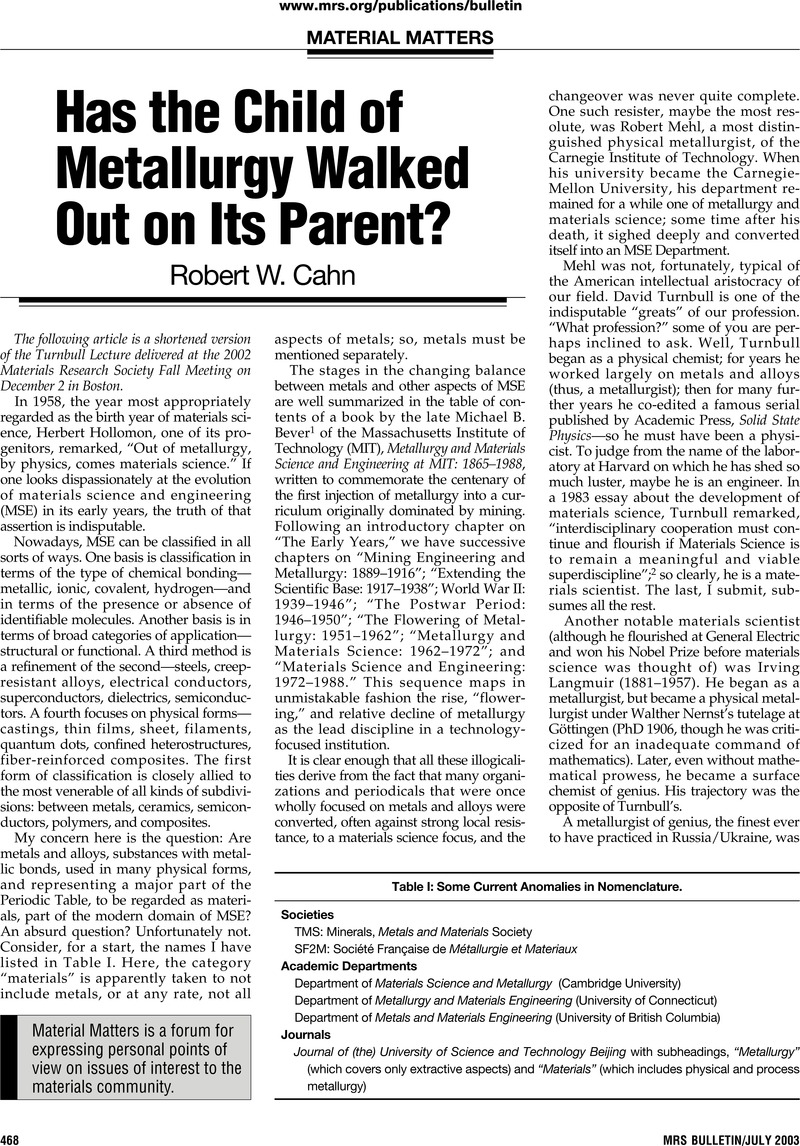Crossref Citations
This article has been cited by the following publications. This list is generated based on data provided by Crossref.
Moeck, P.
Padmanabhan, K.
Qin, W.
and
Fraundorf, P.
2004.
Goniometry of Direct Lattice Vectors Supporting Students' Comprehension of Crystallographic Core Concepts and Demonstrating Image-Based Nanocrystallography.
MRS Proceedings,
Vol. 827,
Issue. ,
Hentschel, Klaus
2011.
Von der Werkstoffforschung zur Materials Science.
NTM Zeitschrift für Geschichte der Wissenschaften, Technik und Medizin,
Vol. 19,
Issue. 1,
p.
5.
Sensharma, Prerana
Madhumathi, G.
Jayant, Rahul D.
and
Jaiswal, Amit K.
2017.
Biomaterials and cells for neural tissue engineering: Current choices.
Materials Science and Engineering: C,
Vol. 77,
Issue. ,
p.
1302.



